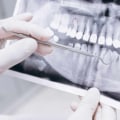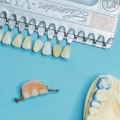Among all oral health issues faced globally, dental caries—commonly known as tooth decay or cavities—holds the unfortunate distinction of being the most prevalent oral disease. It affects people across all age groups, from young children to the elderly, and its impact can range from minor discomfort to severe pain, infection, and even tooth loss. What makes dental caries so widespread is its multifactorial origin: it results from the interaction between bacteria in dental plaque, dietary sugars, and the susceptibility of tooth surfaces. The process is slow and progressive but often goes unnoticed until significant damage has occurred, making it a silent yet pervasive health issue in both developed and developing nations.
The Mechanism Behind Tooth Decay
To understand why dental caries is so common, it’s important to grasp how it develops. The bacteria in our mouths feed on sugars and carbohydrates left on teeth after eating. As they metabolize these substances, they produce acid that gradually demineralizes tooth enamel—the protective outer layer. Over time, this leads to the formation of cavities. If left untreated, the decay can progress deeper into the tooth, affecting the dentin and eventually reaching the pulp, where nerves and blood vessels reside. This can cause significant pain, infection, and require complex interventions such as root canals or extractions. The continuous nature of this process, combined with inadequate oral hygiene or limited access to dental care, explains the disease’s high prevalence.
Risk Factors That Contribute to Its Spread
Several risk factors increase a person’s vulnerability to tooth decay. Poor oral hygiene habits, frequent consumption of sugary snacks or drinks, inadequate fluoride exposure, and dry mouth conditions all contribute significantly. Social determinants such as education level, income, and access to dental services also play a vital role. In many rural or underserved areas, individuals lack access to preventive care like fluoride treatments or dental sealants, increasing their risk. Children, particularly those from low-income families, are especially susceptible due to a combination of dietary habits, insufficient brushing, and delayed dental visits.
Impacts Beyond the Mouth
The effects of dental caries extend far beyond just oral discomfort. In children, untreated tooth decay can impair speech development, concentration, and school performance. In adults, it can lead to missed work, reduced self-confidence, and poor nutrition due to pain or difficulty chewing. In extreme cases, untreated infections from advanced tooth decay can lead to systemic health issues, including cardiovascular complications. The disease burden also affects healthcare systems by increasing emergency room visits and adding to overall treatment costs. These wider impacts highlight the importance of recognizing and addressing tooth decay not just as a dental issue, but as a public health concern.
Prevention Through Education and Access
The most effective way to combat the widespread nature of tooth decay is through prevention. Regular brushing and flossing, routine dental checkups, fluoride treatments, and limiting sugar intake are all key components. Community-based programs, school dental education initiatives, and fluoridation of public water supplies have shown success in lowering decay rates, particularly among children. Equally important is improving access to dental services for vulnerable populations, including those with disabilities or mobility limitations. This is where innovative solutions like wheelchair-friendly lift technology can make a significant difference—by enabling patients with mobility challenges to access dental chairs and treatment areas safely and comfortably, clinics can serve a broader segment of the population with dignity and efficiency. Accessible infrastructure is a vital step in ensuring that preventive care reaches everyone, including those who might otherwise be unable to receive routine treatment due to physical limitations.
The Role of Healthcare Providers
Dental professionals play a central role in identifying and managing tooth decay early. Regular exams, x-rays, and discussions about diet and hygiene can uncover early signs of demineralization before cavities form. Dentists and hygienists also serve as educators, empowering patients with knowledge and tools to protect their oral health at home. In addition, medical providers such as pediatricians and primary care physicians are increasingly being trained to perform basic oral screenings, especially in areas where access to dental care is limited. This multidisciplinary approach can improve early detection and broaden preventive efforts.
Conclusion: Addressing a Common but Preventable Condition
Dental caries may be the most common oral disease, but it is also one of the most preventable. Through a combination of daily self-care, community health initiatives, accessible facilities, and coordinated healthcare efforts, we can reduce its prevalence and long-term impact. Recognizing the broader implications of tooth decay on overall well-being and investing in inclusive care—such as environments equipped with wheelchair-friendly lift technology—ensures that oral health equity becomes a priority. The path forward is clear: proactive prevention, better access, and a deeper commitment to viewing oral health as a fundamental part of overall healthcare.



